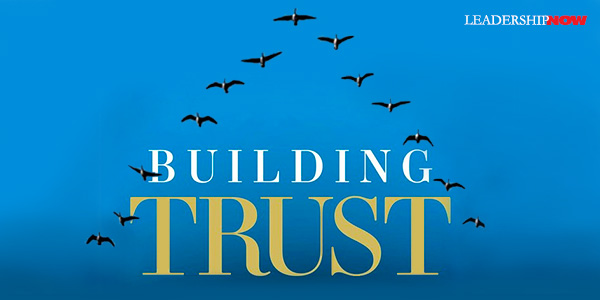 |
 |
06.13.22

Building Trust
TRUST is what holds relationships together, and therefore it is vital to families, groups, and organizations. Of course, trust is a two-way street. Not only must we be trustworthy, but we must extend trust to others. As leaders, we build trustworthiness in others by first extending trust to them. Trust is based on our behavior. We can behave our way into trust, and we can behave our way out of trust. Understanding the bases of a trust decision can help us to build trust and recover when we have been untrustworthy. The following model introduced by Darryl Stickel in Building Trust: Exceptional Leadership in an Uncertain World, helps us to do that.
The model begins with the bases of trust. When deciding whether to trust or not, people ask two questions: How likely am I to be harmed a (perceived uncertainty) and if I am harmed, how badly will it hurt (perceived vulnerability). When combined they give an idea of our perceived risk. And spending on our risk threshold, we make a decision on whether the trust is worth it. “Our risk threshold, or willingness to trust, comes from a combination of our cultural background, personal traits, and experiences.” Our perceived uncertainty of another person may go down as we get to know them, and as a result, we may be more willing to be more vulnerable with them. But emotions also come into play. Our emotions act like a filter and influence our judgment. The more extreme our emotions—love or hate—the less rational we are. Our emotions affect our trust decision and even the outcome we expect. At the same time, we may trust someone in one context but not another. Change the context, and the perceived uncertainty and vulnerability changes too. We can increase our trustworthiness—our perceived uncertainty—by addressing three factors: Do you have my best interests at heart? (Benevolence), Do you follow through on commitments? (Integrity), and Can you do the job? (Ability). When it comes to vulnerability, scarcity (what do I have to lose?), the stakes (what do I feel is at stake?), and value (what value do I place on the stakes?). 
Posted by Michael McKinney at 07:24 AM
|
BUILD YOUR KNOWLEDGE
 

How to Do Your Start-Up Right STRAIGHT TALK FOR START-UPS 
Grow Your Leadership Skills NEW AND UPCOMING LEADERSHIP BOOKS 
Leadership Minute BITE-SIZE CONCEPTS YOU CAN CHEW ON 
Classic Leadership Books BOOKS TO READ BEFORE YOU LEAD |